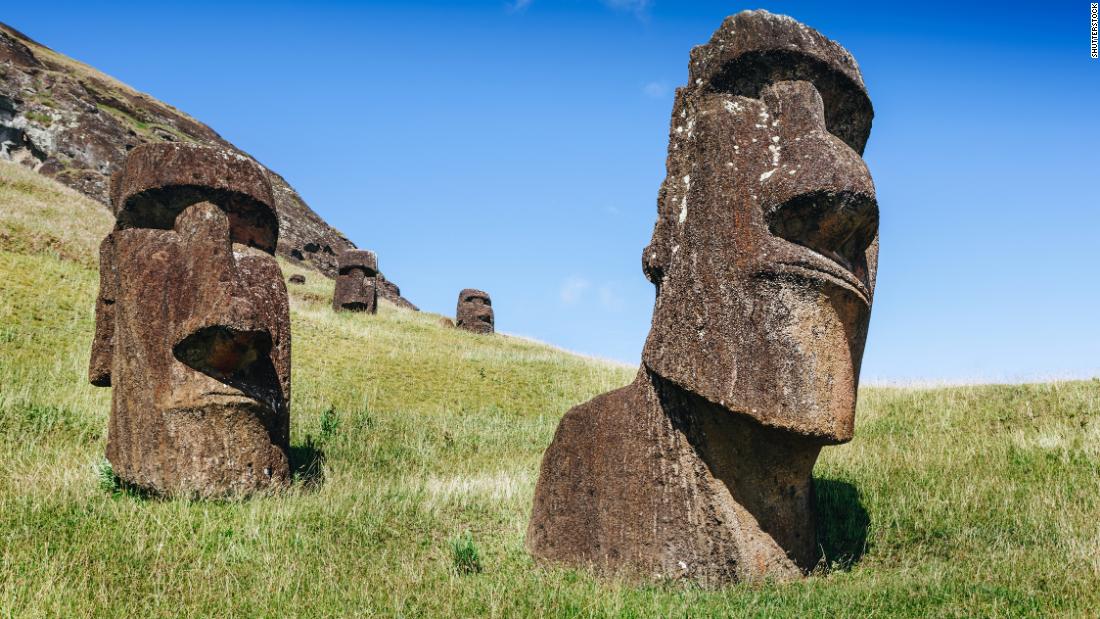Easter Island was discovered by Dutch explorers on Easter Sunday in 1722. Initially known as Rapa Nui to its first inhabitants, it is located 2,200 miles off the coast of Chile. The remote island is famous for nearly 1,000 giant stone statues known as Moai.
The first inhabitants were the Rapa Nui, a Polynesian society that arrived there between 700-800 AD. They developed a rich culture during their time there, yet they depleted its resources by 1600. They left no trees and food sources behind. Because of that, remaining islanders turned to cannibalism to survive.
Nowadays, it is a UNESCO World Heritage Site with several descendants of the Rapa Nui still living there.
Why is it called Eater Island?
A group of colonists from an unidentified location in Eastern Polynesia settled on the island between 600 and 800 AD. They sailed in south-easterly direction for many weeks before that.
![]()
The name of the island comes from the European explorer Jacob Roggeveen. He was the first one to see the island on Easter Sunday in 1722. Hence, the name.
World’s most secluded inhabited island
Lying on the southeastern Pacific Ocean, the island is located 2,200 miles off the coast of Chile. It is among the world’s most remote inhabited islands.
It remains a territory of Chile, but it takes at least five hours to get to the island. And the only way there is by plane. There are no harbors on the island. You can fly to the island from Tahiti, taking seven hours, or from Santiago, taking five hours.
Free from pollution, the island is home to some of the clearest ocean waters in the world. It is transparent up to a depth of 160 to 170 feet.
Mythology
There are many myths related to the island. The most include Aku-aku, who are guardians of the sacred family caves, Tangata Manu, the Birdman cult which practiced its religion on the island up to 1860s, and Makemake, an important god.
The Moai of the Island
The most iconic elements of the Rapa Nui culture is the massive moai, huge stone sculptures that represented the faces of worshipped ancestors. Originally, there were thousands of the statues on Easter Island.
![]()
Yet, during the 1700s, civil wars between the Rapa Nui reduced the number. Clans fought over scarce resources, tearing down the moai’s of the opposing tribe. There were also moai stolen by collectors before the island was declared a UNESCO World Heritage Site in 1995.
Fun fact: originally, they were known as Easter Island heads, before the archaeologists discovered the statues have bodies in 1914.
Transportation of the moai statues
Here is something interesting, the Rapa Nui moved the moai statues up to 11 miles. You are probably wondering how, given the sheer size and weight of the statues.
Islanders carved them with stone chisels from solidified volcanic ash found on the volcanic carter. There is no written history about how they moved the moai. Only stories passed along generations.
Given the average height, width, and weight, which is almost two African elements, this transportation was a remarkable feet.
According to one theory, natives used a combination of ropes, log rollers, and wooden sledges. But it is unclear whether this method would work on the taller moai sculptures.
Art forms on the island
Beside the moai, the island is home to petroglyphs depicting birdmen and other fantastic creatures. Some wooden images depict family ancestors.
Imagery is conventionalized, which means they might be individual portraits.
The Tapati Rapa Nui Festival
Despite the fact the island is almost secluded, and the fastest way to get there is a five-hour flight, it is home to the Tapati Rapa Nui festival every year.
![]()
Inhabitants celebrate their culture with the festival held during the first two weeks of February. Traditional activities include wood carving and music played on unique ukuleles.
During the festival, the island is split into two teams led by a queen. The winning team crowns its queen as Queen of the Island for the rest of the year.
Administration and status
Easter Island has a status of special territory of Chile, granted in 2007. It is a province of the Valparaiso Region and contains a single commune. Both the commune and province are called Isla de Pascua and encompass the whole island and its surrounding rocks. The governor is appointed by the President of the Republic.
![]()
Municipal administration is located in Hanga Roa, led by a major and six-member municipal council. They are all elected for a four-year mandate.
Since August 2018, non-residents cannot stay on the island for more than 30 days.



